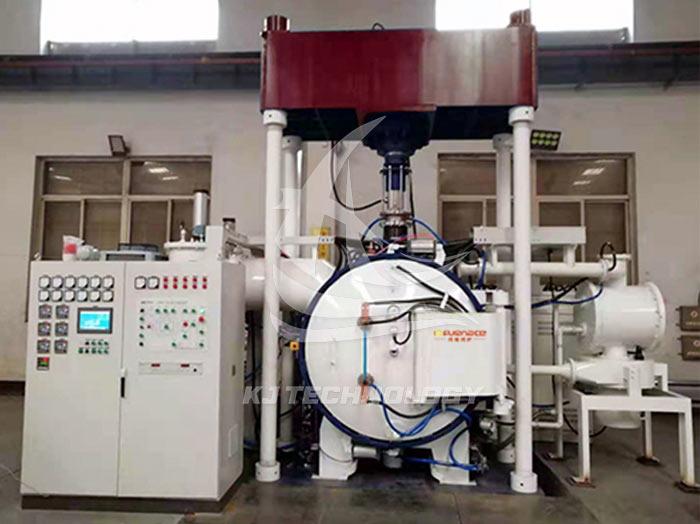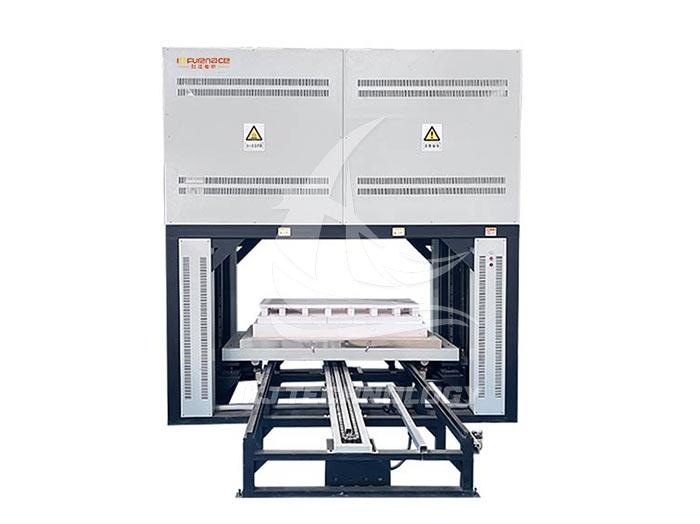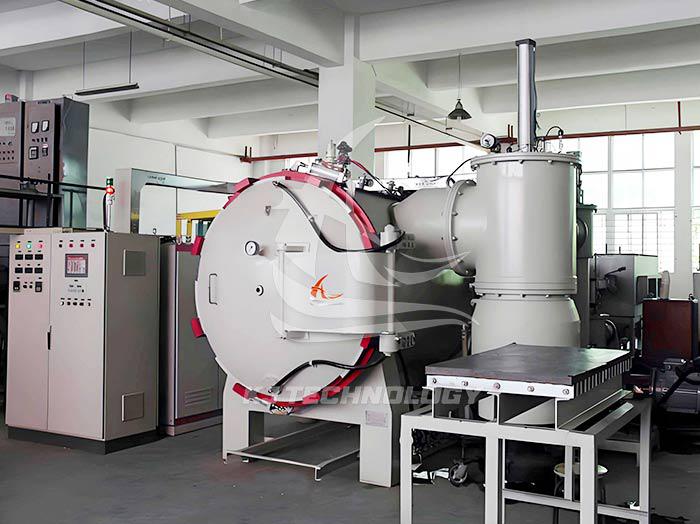Guide to using atmosphere vacuum furnace sintering furnace
 05-29-2025 Author: KJ technology
05-29-2025 Author: KJ technology
The following is a guide for using the atmosphere vacuum furnace sintering furnace, covering key aspects such as preparation before operation, operation process, precautions, and maintenance:
1. Preparation before operation
CHECK DEVICE STATUS
Confirm the normal supply of water, power, and gas sources (such as nitrogen and argon), check the oil level of the vacuum pump and the circulation status of the cooling water.
Check the sealing of the furnace body to ensure that the observation window and temperature measuring hole are clean and unobstructed, the sealing tape has good elasticity and the size is qualified.
Check if the graphite crucible and furnace accessories are complete to avoid missing or damaged parts.
Check whether the transmission components (such as lever handles) are flexible and whether the rotary vacuum gauge meets the requirements.
Environment and Safety
Ensure that the workplace is dry and well ventilated, and avoid humid environments that may cause moisture adsorption inside the furnace.
Operators are required to wear protective equipment and are prohibited from touching high-voltage areas such as intermediate frequency cabinets with their hands.
2. Operation process
Loading and sealing
Select the loading method based on the characteristics of the sintered product to ensure uniform distribution of materials and avoid contact with heating elements.
Before closing the furnace cover, place a vacuum sealing tape on it, rotate the lever handle to tightly fit the furnace cover with the furnace body, and tighten the fixing nut.
Vacuum pumping and inflation
Start the vacuum pump, slowly open the butterfly valve, and pump until the vacuum degree inside the furnace reaches the specified value (such as below 1.33 × 10 ⁻¹ Pa).
If protective gas (such as argon or nitrogen) needs to be introduced, first turn off the vacuum gauge switch, and then fill the gas to the required pressure.
Heating and insulation
Set the heating curve (heating rate ≤ 10 ℃/min), start the heating program, and observe the ammeter and temperature indication.
After reaching the set temperature, keep warm and monitor the status of the induction coil through the observation hole to prevent arcing.
Cooling and shutdown
After sintering, turn off the heating power and wait for the furnace temperature to drop below 400 ℃ before slowly inflating to atmospheric pressure.
Close the butterfly valve and power supply of the vacuum pump, continue to supply tap water to cool the induction coil and furnace body, and finally stop the water pump.
3. Precautions
Operating specifications
Overloading of equipment is prohibited, and the surface temperature of heating elements must not exceed the rated value.
After heating up, do not suddenly damage the vacuum system or open the furnace door. Inflate it to atmospheric pressure first.
Avoid direct contact between copper, aluminum, and other metals and heating elements to prevent corrosion and damage to the components.
Emergency Management
When the cooling water is abnormal, immediately connect the backup cooling water to prevent equipment from overheating and damage.
If the water supply is cut off during a power outage, it is necessary to urgently connect the water source; If heating is in progress, keep the equipment in its original state and cool naturally.
data record
Record key parameters such as temperature, vacuum degree, and gas flow rate for subsequent analysis and optimization of the process.
4. Maintenance and upkeep
Daily cleaning
Clean the furnace after each use to prevent impurities such as oxide scales from falling off and causing short circuits.
Regularly clean the oxide scale of components such as the bottom plate, molybdenum heating rod, and furnace insulation layer, and do not strike them.
Long term storage
Idle equipment needs to be vacuumed or filled with pure argon gas for protection, to prevent the materials inside the furnace from adsorbing moisture.
Perform low-temperature operation under vacuum every two weeks to check the equipment status.
Regular maintenance
Check the sealing of the vacuum system every six months and add vacuum sealing grease.
Calibrate thermocouples, vacuum gauges, and other instruments annually to ensure measurement accuracy.








